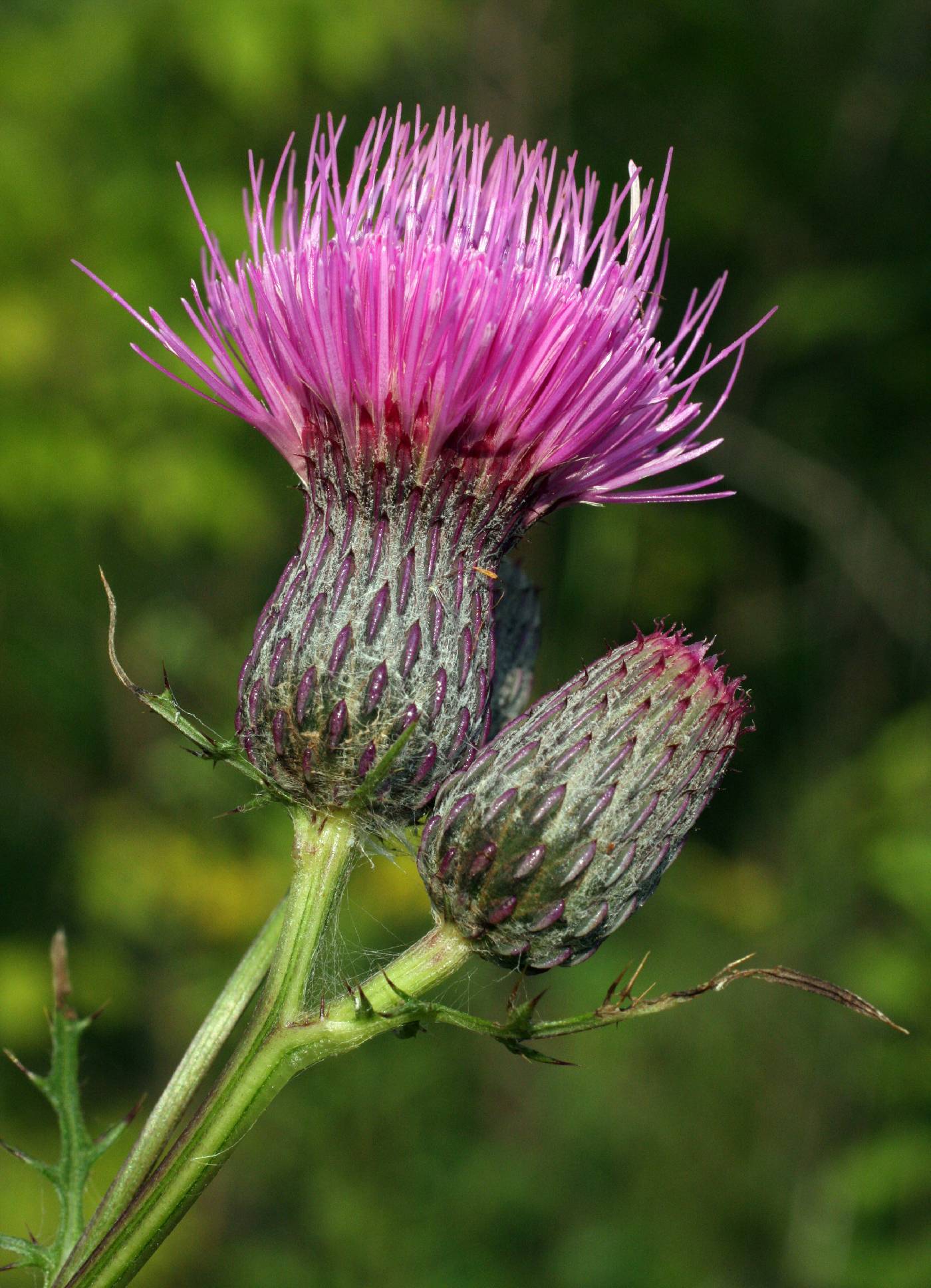Cirsium
|
Family: Asteraceae |
Annuals, biennials, or perennials, 5-400 cm, spiny. Stems (1-several) erect, branched or simple, sometimes narrowly spiny-winged. Leaves basal and cauline; finely bristly-dentate to coarsely dentate or 1-3 times pinnately lobed, teeth and lobes bristly-tipped, faces green and glabrous or densely gray-canescent, usually eglandular. Heads discoid, borne singly, terminal and in distal axils, or in racemiform, spiciform, subcapitate, paniculiform, or corymbiform arrays. ( Peduncles with ± reduced leaflike bracts.) Involucres cylindric to ovoid or spheric, (1-6 ×)1-8 cm. Phyllaries many in 5-20 series, subequal or weakly to strongly, outer and middle with bases appressed and apices spreading to erect, usually spine-tipped, innermost usually with erect, flat, often twisted, entire or dentate, usually spineless apices (distal portion of phyllary midveins in many species with elongate, glutinous resin gland, usually milky in fresh material but dark brown to black when dry). Receptacles flat to convex, epaleate, covered with tawny to white bristles or setiform scales. Florets 25-200+; corollas white to pink, red, yellow or purple, ± bilateral, tubes long, slender, distally bent, throats short, abruptly expanded. cylindric, lobes linear; (filaments distinct) anther bases sharply short-tailed, apical appendages linear-oblong; style tips elongate (as measured in descriptions including the slightly swollen nodes, long cylindric fused portions of style branches and very short distinct portions). Cypselae ovoid, ± compressed, with apical rims, smooth, not ribbed, glabrous, basal attachment scars slightly angled; pappi persistent or falling in rings, in 3-5 series of many flattened, plumose bristles or plumose, setiform scales (longer bristles shorter than corollas except in C. foliosum and C. arvense). x = 17. Only three genera in Cynareae are represented by native species in the New World, and of these Cirsium is by far the most widely distributed and diverse. Native species of Cirsium range from sea level to alpine and from boreal regions of Canada to the tropics of Central America. Members of the genus occur in a myriad of habitats including swamps, meadows, forests, prairies, sand dunes, and deserts. Heads discoid, the fls all tubular and perfect, or the plants sometimes dioecious by abortion; invol bracts imbricate, usually some or all of them spine- tipped, and in many spp. with a thickened, glutinous, dorsal ridge; receptacle flat to subconic, densely bristly; cors purple to yellowish or white, with slender tube and long, narrow lobes; filaments usually papillose-hairy; anthers with a firm, narrow, apical appendage, evidently tailed at the base; style with a thickened, hairy ring and an abrupt change of texture below the ±connate, papillate branches; achenes basifixed or nearly so, glabrous, firm, thick-compressed, often curved, nerveless, commonly with a cartilaginous, pale yellow collar; pappus of numerous plumose bristles, deciduous in a ring; spiny herbs with alternate, toothed to more often pinnatifid lvs and medium- sized to large heads. 200, N. Hemisphere. (Spp. all sometimes included in Carduus) Gleason, Henry A. & Cronquist, Arthur J. 1991. Manual of vascular plants of northeastern United States and adjacent Canada. lxxv + 910 pp. ©The New York Botanical Garden. All rights reserved. Used by permission. |

